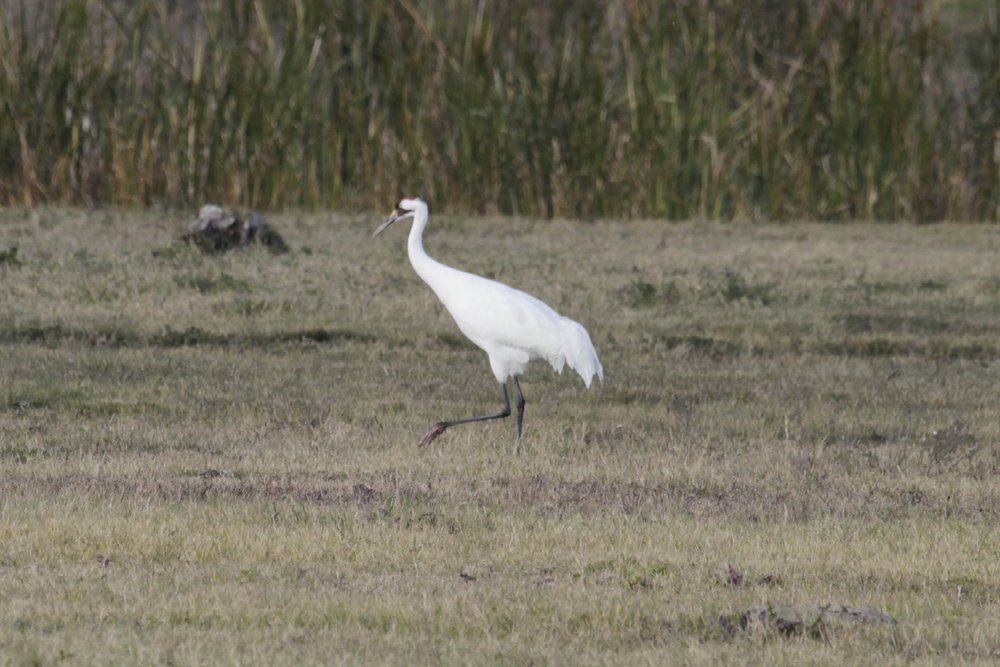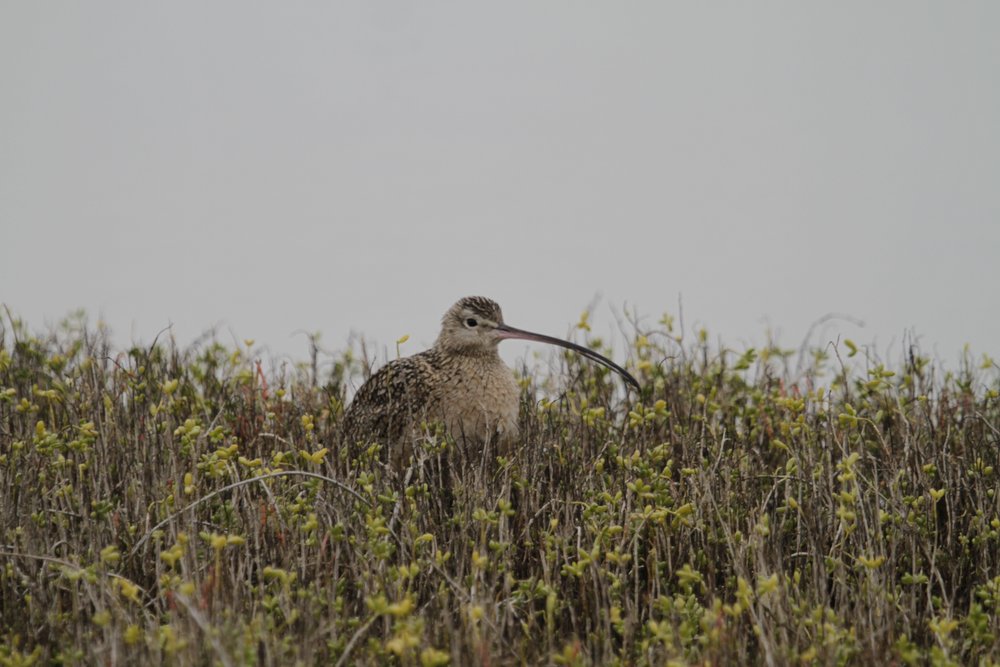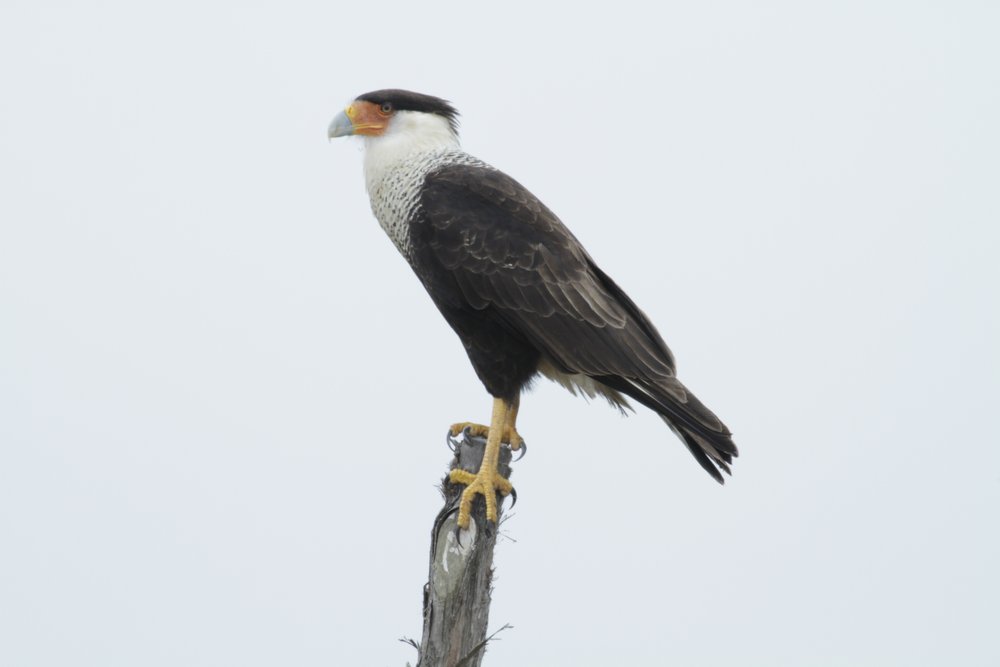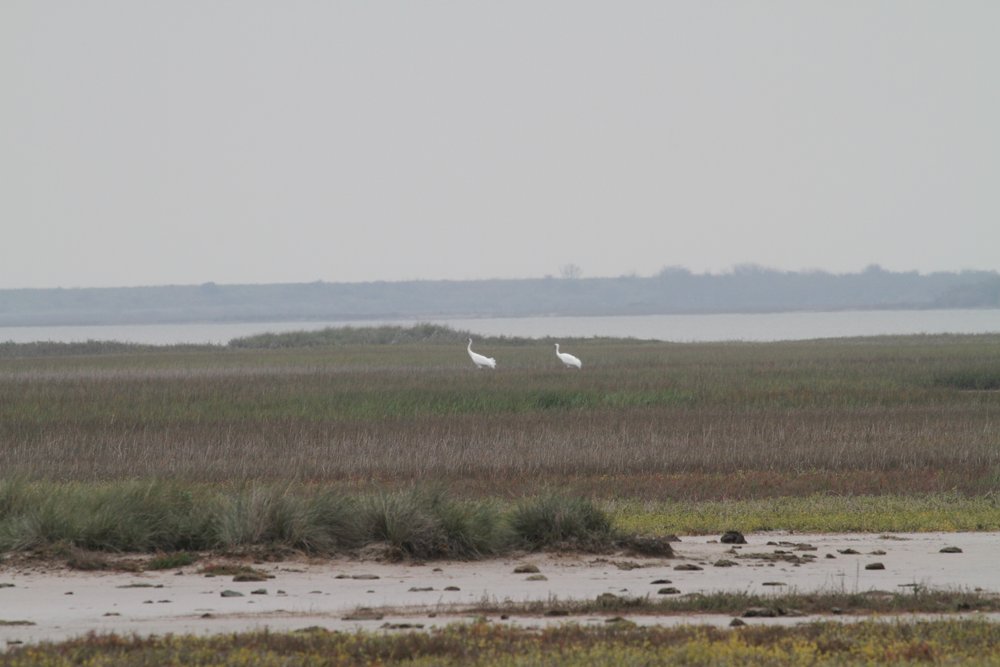
In January of 2007, my father and I drove west from Pennsylvania to Arizona together, stopping in Kentucky, Louisiana, Texas. He ate oysters, while I took walks, and together we marveled over our vast country by reading aloud billboards, commenting on the mesquite, the ugliness of strip malls, the trash by the side of the road. The one place he wanted to stop was Aransas National Wildlife Refuge on the upper Texas Coast. Why? To see Whooping Cranes on the bird’s wintering grounds. My father was a novelist, a bookish man, not a naturalist. But the Cranes captured his imagination and he wanted to see them. Aransas, established in 1937 to protect migrating birds and especially the Whooping Crane, is a reliable place to see the birds in winter.

So we stopped in Aransas. And we walked one trail, giddy over the alligators that lazed so close to the trail and marveled over the Roseate Spoonbills. We drove a beautiful 15 mile loop through grasslands and there I saw something take off, something large and white, like a sheet moving through the air. I knew little about birds at the time so I called it a Whooper, but I knew I was lying. Could easily have been a Pelican or a Great Egret. I needed to go back to see those elegant white birds.
This trip of 2015 started in San Antonia in rain, in gray, and well, it pretty much stayed that way through the week. Texas was supposed to be warmer than New York in January and it was—but just barely. My friend Teri and I started by driving the loop at Anahuac, which was like a bird safari, the Coots on every bit of open water, but also Reddish Egrets, White Ibis, and every species of duck that I know. A few days later we were further along the coast. We had passed some of the prettiest and some of the ugliest landscapes we had ever seen. Don’t mess with Texas? The beaches were loaded with garbage. And the views from our rental car roller-coasted from protected refuges to blazing, otherworldly oil refineries.
Just before Aransas we decided to drive south along a sand-dirt road near Collegeville. The land there was extraordinary, salt marshes with grasses in shades of red, orange and yellow. We were alone on that isolated road, seeing Crested Caracara, those dignified looking raptors with flat heads and orange face masks perched on fence posts, and Long-billed Curlews shy in the grasses. And then I heard them: Sandhill Cranes. It’s a call you never forget. I pulled over and we looked at the gray long-legged birds through the scope as they moved in a flock through the grasses.

We continued down the road, both of us pointing left, then right at one bird after the next, a bit dizzy from it all. “Egret,” Teri said pointing left. They were the standard long-necked white bird of the trip. “Wait,” I said, noting the birds were bigger, holding themselves not Egret-like. I stopped, pulled out the scope, saw the dark heads of the Whooper and started to tear up.
The Whooping Crane is one of the rarest birds in the United States. In the 1940s populations dropped to 15. From that tenuous number we have climbed to around 600, some in captivity. The return of the Whooper is one of the celebrated acts of conservation: if we put our money, time, and imagination to the task we can do this. The most imaginative part of this is raising chicks using Crane puppets and then teaching the birds to migrate using an ultra light craft.

If only we gave all bird species that are endangered this kind of attention, this much love (and money and dedicated researchers). But rather than lamenting that, I stood there on that lonely dirt road grateful we have done this one extraordinary act of protection. The big white birds in the distance grazed about, unaware of my awed excitement. Because they were such a surprise sighting, they felt like my birds. And this, I realize is one of the great joys of birding: finding the unexpected. Or rather in this case, finding the expected in an unexpected place. That it was such a special bird added to the thrill. This all combined to give me a keen sense of discovery, such a rare experience in a world so fully discovered.